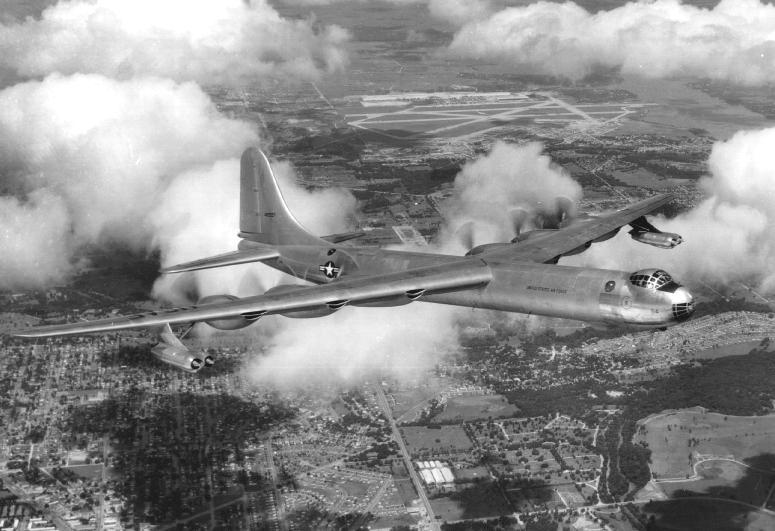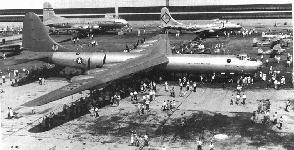An intercontinental bomber, designed during WW II (to bomb Germany from the US in case the UK fell), first flew in 1946 and entered service with Strategic Air Command in 1948. More than 380 B-36s were built up to 1954. Around 1958, it was replaced by the B-52.
The B36 was the backbone of the USA's nuclear deterrent in the 1950s, much to the dismay of the US Navy, which wanted aircraft carriers to do the job. In the days before submarine-borne nukes, B-36s were continuously in the air in order to enable the US to retaliate if the USSR attacked and destroyed ground forces. Flights of over 24 hours were common. The four jets were an afterthought and were used during takeoff and for rapid climbs in-flight.
Although it was an interim as a bomber and never saw action, it served as a reconnaissance aircraft, flying over China far above the maximum heights of communist fighters.
Wingspan: 230 ft. Length: 162 ft. 1 in.
Height: 46 ft. 9 in. Weight: 410,000 lbs. loaded Armament: Nuclear bombs, or 86,000 lbs of conventional bombs; cannon Engines: Six Pratt & Whitney R-4360s (@ 3,800 hp), four General Electric J-47s (@ 5,200 lbs thrust) Max speed: 435 mph. Range: 10,000 miles (4,000 when heavily loaded) Service Ceiling: 45,700 ft. |




